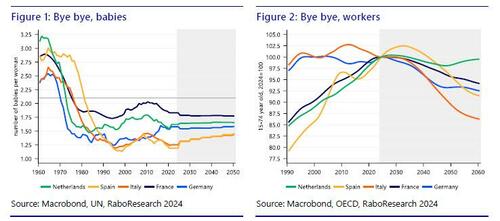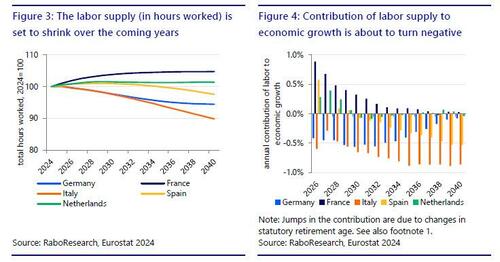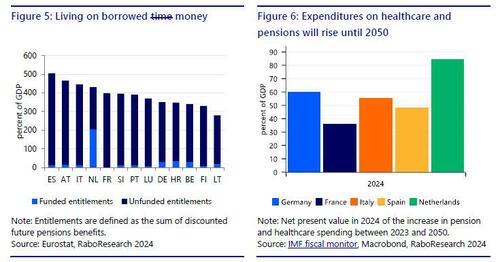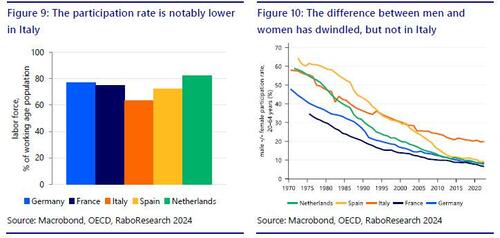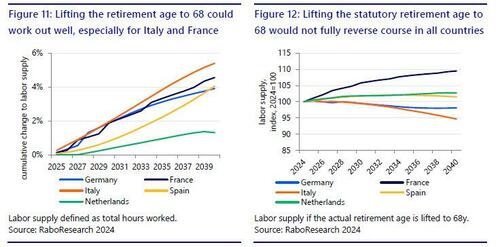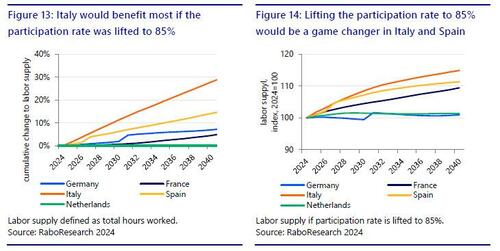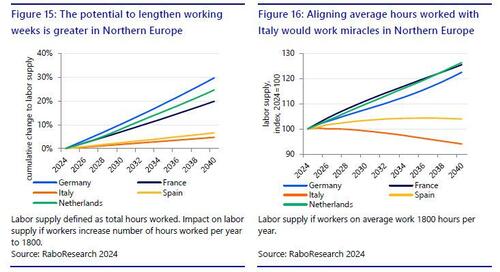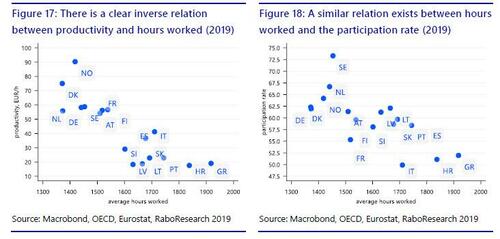One can readily admit that the Magisterium's manner of expression does not seem very easy to understand at times. It needs to be translated by preachers and catechists into a language which relates to people and to their respective cultural environments. The essential content of the Church's teaching, however, must be upheld in this process. It must not be watered down on allegedly pastoral grounds, because it communicates the revealed truth.
All
What Do You Got? The Wild One, The Loveless and the Biker Movie
On the fourth of July weekend in 1947, a group of bikers rode into a small California town and, depending on who you believe, either had a great party or went on an orgy of destruction. This single incident – now famous as the Hollister Invasion or the
Enter the American Detective Force...
Our latest Tale for Our Time charges on: The Secret Adversary, Agatha Christie's first Tommy & Tuppence caper, set against the turbulent politics of the world after the Great War. Thank you for all your kind comments about this latest serialisation. Leo,
Florida Developer Seeks $100 Million For Penthouse Atop 66 Story Building In Brickell Key
Florida Developer Seeks $100 Million For Penthouse Atop 66 Story Building In Brickell Key
Tyler Durden
Sat, 04/27/2024 - 09:55
It looks as though the flight to Florida, specifically Miami, by Wall Street firms and New Yorkers during the height of Covid is starting to pay dividends for the state.
And if commercial real estate is dead, someone forgot to tell Swire Properties Inc., who is reportedly seeking $100 million to develop a penthouse atop a 66-story tower on Brickell Key island in Florida.
The building is already home to the The Residences at Mandarin Oriental, but the penthouse - capable of being split into two units, according to Bloomberg - is being marketed as its "crown jewel".
Swire President Henry Bott told Bloomberg: “The center of gravity in Miami has shifted to Brickell. We’re already seeing a strong response from domestic US buyers.”
Swire's ability to attract buyers to an area primarily frequented by joggers and dog walkers will determine the success of the sale, the report says. As of now, the highest-priced property ever sold on Brickell Key was a $7.8 million condominium in 2021.
Bloomberg writes that Swire is investing over $1 billion in constructing two upscale towers, branded with Mandarin Oriental, on the island's final available plot. One tower features a lavish 23,000-square-foot duplex, complete with its own infinity pool and private elevator lobby. Units at this project start at around $4.9 million, with occupancy expected by 2029.
The second tower will host a Mandarin Oriental hotel, set to become the brand's flagship in North America, replacing the existing hotel built in 2000. Swire has been developing much of the island since acquiring nearly 34 acres in the late 1970s.
Brickell, Miami's financial district, has seen a surge in activity, attracting Wall Street firms like Citadel and JPMorgan Chase, along with affluent professionals from New York and Chicago. Developers in Miami are targeting these wealthy newcomers with luxury condos, rivaling prices in Manhattan or California.
For instance, Ritz-Carlton condos in South Beach include a penthouse listed at $125 million, while the Shore Club Private Collection nearby has a penthouse with a private rooftop pool under contract for over $120 million. Fisher Island, another elite neighborhood, has seen penthouses sold for a total exceeding $150 million.
Competing directly with Swire's Brickell project is a hotel-branded condo in Coconut Grove, the Four Seasons residential tower, attracting affluent buyers, especially from the finance sector. Developer Nadim Ashi reports strong interest, with over 30% of units already under contract and closings expected by late 2026. He estimates the combined penthouses could fetch up to $120 million.
Ugo Colombo, chief executive officer of CMC Group, concluded: “Miami used to be a dark hole at night. The city’s evolved so much and Covid gave it its last push to become a luxury hub.”
Kerala priest slams BJP candidate for fake election propaganda video
Fr Paul Thekkanath, vicar of Puthukkad, filed a complaint over a video by the ruling National Democratic Alliance. Supporters of Suresh Gopi used portions of a speech by the clergyman to suggest that he was backing their candidate. Christian voters are an important electorate in the southern Indian state.
Washington's Fiscal Mess Is Irresponsible, Unethical, Immoral: Former US Comptroller General
Washington's Fiscal Mess Is Irresponsible, Unethical, Immoral: Former US Comptroller General
Tyler Durden
Sat, 04/27/2024 - 09:20
Authored by Andrew Moran via The Epoch Times,
In 2007, the U.S. national debt was below $10 trillion, and the budget deficit was about $160 billion. Federal spending was about $3 trillion, and interest payments were approximately $400 billion.
Then the numbers spiraled out of control.
Washington’s fiscal situation has drastically changed since then; total debt has surpassed $34 trillion, the annual budget shortfall exceeds $1 trillion, and interest costs have topped $1 trillion.
David Walker, the former comptroller general of the United States and a Main Street Economics advisory board member, is unsurprised.
Seventeen years ago, Mr. Walker rang fiscal alarm bells. Like Ross Perot before him, he took his case to the American people and delivered the cold, hard truth: The government’s books are unsustainable, and interest charges on the mounting debt will swallow a significant portion of federal revenues.
During this time, the former head of the Government Accountability Office (GAO) appeared on a widely viewed episode of “60 Minutes,” toured the country to spotlight worrisome trends in the U.S. government’s budget (he did this again in 2012), and attempted to convince lawmakers of the unsustainable fiscal path.
He also penned a 2009 book titled “Comeback America: Turning the Country Around and Restoring Fiscal Responsibility.”
Given the treasure trove of budgetary numbers coming out of the nation’s capital almost daily, such as nearly half of income tax revenues being dedicated to interest payments, Mr. Walker’s warnings have not been heeded nearly two decades later.
According to the Congressional Budget Office’s long-term outlooks, the national debt will eye $50 trillion by 2034, fueled by around $17 trillion in cumulative deficits. As a percentage of GDP, debt held by the public and the deficit will reach 166 percent and 8.5 percent by 2054, respectively, the CBO forecasts.
“Washington has become addicted to spending, deficits, and debt, and they’re charging the credit card and planning to send the bill to younger and future generations of Americans,” Mr. Walker told The Epoch Times.
“That’s irresponsible. It’s unethical, and it’s immoral, and it needs to stop.”
Is the United States past the point of no return?
“Only God knows when the tipping point is going to occur, and God’s not telling us,” he said.
He combs through various metrics to gauge the situation.
One of these is the debt-to-GDP ratio, which is presently at about 122 percent. Outside of the coronavirus pandemic, this is a record high.
Mandatory spending as a percentage of the federal budget is another metric. It currently stands at around 73 percent.
Another one is interest as a percentage of the budget, which is close to 15 percent.
For Mr. Walker, it is not only raw numbers but what the trends are displaying, which requires a deep dive into demographics.
“We have an aging society with longer lifespans, relatively fewer workers, supporting more retirees, and a skills gap,” he noted.
Last year, two notable developments happened: a majority of Baby Boomers were at least 65, and the birth rate tumbled to the lowest in a century.
This will metastasize into a costly burden for the federal government, particularly Social Security.
The Peter G. Peterson Foundation estimates that the current worker-to-beneficiary ratio is 2.8-to-1, down from 5.1-to-1 in 1960. By 2035, the Social Security Administration projects the ratio will further slide to 2.3-to-1.
Republicans and Democrats
President Joe Biden has claimed that he has acted fiscally responsibly, telling a crowd at a North America’s Building Trades Unions event on April 24 that he cut the national debt. President Biden has repeatedly touted this claim over the last 18 months, although he has added close to $7 trillion to the national debt since taking office in 2021.
While Republicans have griped over the current administration’s spending endeavors, experts assert that the GOP has also contributed trillions of dollars to the debt pile. One of the GOP-led expansionist initiatives was Medicare Part D under former President George W. Bush.
This program, which was designed to utilize private health care plans to offer drug coverage to Medicare beneficiaries, added $8 trillion in new unfunded obligations. Mr. Walker accepted that “the politicians were totally out of touch with fiscal reality,” considering that Medicare was already underfunded by $19 trillion.
Former U.S. President George W. Bush speaks at Seminole Golf Club in Juno Beach, Fla., on May 7, 2021. (Cliff Hawkins/Getty Images)
Put simply, both parties have been fiscally irresponsible, and now the bills are coming due.
Mr. Walker purported that politicians suffer from myopia as they are too focused on the next election and, as a result, fearful of making tough decisions. They also experience tunnel vision, he says, meaning they only concentrate on one issue at a time “without understanding the interdependency” and “the collateral effect.”
Self-interest is another malady infecting both sides of the aisle as they aim to keep their jobs and ensure their party stays in power.
“We’ve lost our sense of stewardship,” he said.
“Stewardship is not just generating results today, not just leaving things better off when you leave them when you came, but better positioned for the future,” Mr. Walker explained. “We’ve lost that sense. We need to regain it if we want our future to be better than our past.”
He identified Rep. Jody Arrington (R-Texas), who chairs the House Budget Committee, as one of the few lawmakers to realize the fiscal issues by committing to the Fiscal Commission Act and supporting a constitutional amendment that would limit government growth and stabilize the debt-to-GDP ratio.
“There are others, but there’s not enough,” Mr. Walker said.
Earlier this year, the House Budget Committee advanced the Fiscal Commission Act of 2024 out of committee with bipartisan support.
The bill would establish a 16-member panel featuring six Republicans, six Democrats, and four outside experts without voting power. The group would explore strategies to balance the budget as soon as possible and assess mechanisms to enhance the long-term solvency of various entitlement programs, especially Social Security and Medicare.
Despite some consternation from several Democrats, the bipartisan push received applause, including from the Committee for a Responsible Federal Budget.
“The federal debt is on an unsustainable course, and lawmakers have been unable or unwilling to correct it,” the organization stated. “A fiscal commission would bring Members of both parties and chambers together to facilitate a conversation over how to solve these problems, without pre-prescribing any particular solution (or a solution at all).”
Hope and Change
Whether the United States can improve its fiscal trajectories remains to be seen.
Mr. Walker is hopeful about some of the legislative efforts coming out of the nation’s capital. The country is beginning to face the consequences of years of fiscal mismanagement, making it harder to sell its debt to the rest of the world.
In recent months, many Treasury auctions have led to lackluster demand among domestic and foreign investors. Market watchers have warned that global financial markets might share Fitch and Moody’s concerns about America’s fiscal deterioration.
But when discussing trillions of dollars, percentages, GDP, and servicing costs, how can the average person, worried about paying his mortgage or replacing a broken-down refrigerator, grasp or even be concerned with these trends?
According to Mr. Walker, you tap into their “head and heart.”
“You have to help them understand that we’re already seeing some of the implications of fiscal irresponsibility,” he said, adding that the causes of the Roman Empire’s demise are familiar to what is transpiring in the United States today: fiscal irresponsibility, a decline in moral values, an overextended military, and an inability to control its borders.
However, while it is vital to translate these gigantic numbers into terms the layman can understand, experts also need to “hit their heart.”
“Do they love their country? Do they love their kids, and do they love their grandkids?” he said. “We’re mortgaging their future at record rates.”
Vatican showcases art at Venice Biennale but does not mention Jesus. Pope visiting tomorrow.
The Pope will be visiting tomorrow. One of the artists being venerated there is the Communist-supporting ex-nun Corita Kent, a personification of the evil done after the Second Vatican Council. Ghastly art and she left a trail of ecclesiastical destruction behind her. Evidence that a chief characteristic of a modernist is lack of aesthetic sense. The latter is vital asCatholic Conclavehttp://www.blogger.com/profile/06227218883606585321noreply@blogger.com0
Simply Find Out Who You are Not Allowed to Criticize
I have a son enrolled at the University of Texas. To avoid being late to work, he was yesterday obliged to wade through a clash of pro-Palestinian protestors and Austin police, where the former were being arrested and the latter were, to his mind, remarkably numerous and energetic. These were not qualities he had formerly associated with the Austin police. “Nowhere to be seen” and “Wadya gonna do?” had been, he thought, the mottos of that thin blue line.
Walking to work or class, my son was last year from time to time forced to jog because a psychotic derelict with a machete would playfully pursue him on Guadalupe Street, the main drag adjacent to campus. This was not owing to personal animosity, since this psychotic derelict would roar, brandish his machete, and lunge in the direction of any pedestrian. To this colorful titbit of the urban experience, the attitude of the Austin police was bemused indulgence.
“Nowhere to be seen” and “Wadya gonna do?”
Bemused indulgence is not, however, the attitude of the Austin police to pro-Palestinian protestors, and this despite the fact that, as my son told me yesterday, the protestors were flamboyantly leftist. They were in fact loudly signaling that they had all the right opinions but one. When the same sort of people pyrotechnically protested the death of George Floyd, cops everywhere yawned and clipped their fingernails.
Here are some relevant lines dredged from the archive. They first appeared in a post from 2015.
“Everyone has heard the quote, ‘to learn who rules over you, simply find out who you are not allowed to criticize.’ This is always attributed to Voltaire, although apparently without warrant, since there is no record of his having said it. In fact, it is most probably a refinement of a statement first made in 1993 by Kevin Alfred Strom, a White Nationalist who was thinking of his persecution for Holocaust denial. Whatever its provenance, it is now an internet meme, and rightly so, since it neatly encapsulates a self-evident truth. Power has its privileges, one of them being lèse-majesté.
We can invert this and say that a sure sign of powerlessness is the absence of lèse-majesté. In other words, ‘to learn who the truly marginal nobodies are, simply ask who you are allowed to criticize.’ Criticize here means mock, ridicule and call rude names. To lay the proposition out fully, we should state it thus: ‘to learn who the truly marginal nobodies are, simply ask who you are allowed to mock, ridicule and call rude names in polite society.’ If you can make a group the butt of a joke, or the object of scorn, and still be invited to the next wine and cheese party, that group has no lèse-majesté. They are marginal nobodies.”
Why Did China Facing Endless Troubles from Washington Accept a Visit from Blinken Aimed at Disrupting China’s Relationship with Russia?
Why Did China Facing Endless Troubles from Washington Accept a Visit from Blinken Aimed at Disrupting China’s Relationship with Russia?
Paul Craig Roberts
Blinken Accuses China of helping Trump Steal the Election in November
Last time it was Russiagate. This time will it be Chinagate?
https://www.rt.com/news/596656-blinken-cnn-election-interferense/
While Blinken accuses China out of one side of his mouth, he threatens China out of the other side with sanctions unless China abandons its support of Russia. https://www.rt.com/news/596632-blinken-in-beijing-russia/
At the same time, Blinken is up to mischief in Taiwan and supporting US military aid and presence on the island despite the official US “one China” policy. Surely it must occur to the Chinese government that if China helps Washington isolate Russia, China herself is isolated. In view of such reports as this–“US Encircling China With Military Bases to Cut Off Ocean Access in Conflict Scenario” ( https://sputnikglobe.com/20240427/us-encircling-china-with-military-bases-to-cut-off-ocean-access-in-conflict-scenario—reports-1118142625.html ) — Chinese “Russian expert” Professor Feng Yujun appears to be very foolish. It is difficult to imagine China’s development and Silk Road project without Russian energy.
But maybe not. Both the Russian and Chinese governments have delusional tendencies that if they refuse to respond with more than words to Washington’s provocations, everything will eventually be OK. As I see it, the policy of conflict avoidance simply increases the number and seriousness of the provocations.
As I emphasize, the most important step toward peace would be a Russian-Chinese-Iranian announcement of a mutual defense treaty. This would introduce a missing caution into US foreign policy and halt the provocations that are leading to nuclear war.
On Target with Larry Sparano: PCR interview Part 1 The Great Dispossession
On Target with Larry Sparano: PCR interview Part 1 The Great Dispossession
The Truth About the Destruction of Gaza
The Truth About the Destruction of Gaza
Michael Hudson
https://www.unz.com/mhudson/the-truth-about-the-destruction-of-gaza/
Boeing 767 Loses Emergency Slide After Departing From New York City
Boeing 767 Loses Emergency Slide After Departing From New York City
Tyler Durden
Sat, 04/27/2024 - 08:45
Some Boeing jets, operated by major US carriers, are plagued with persistent issues that concern travelers, prompting a shift toward what is perceived as safer Airbus jets. It appears that hardly a week passes without a new problem with a Boeing jet.
The latest near-mid-air disaster occurred Friday morning on a Delta Air Lines Boeing 767-300, departing from John F. Kennedy International Airport in New York City. An emergency slide separated from the plane during flight.
Breaking Aviation News & Videos posted an image of Delta Flight 520's "right-hand side emergency slide" compartment just above the wing. The compartment is wide open and missing the slide, and a fuselage panel appears to have partially separated from the plane.
Delta Airlines 767-332ER makes emergency return to John F. Kennedy International Airport after losing its right-hand side emergency slide. pic.twitter.com/NHPJCQHgcc
— Breaking Aviation News & Videos (@aviationbrk) April 26, 2024"After the aircraft had safely landed and proceeded to a gate, it was observed that the emergency slide had separated from the aircraft," a Delta spokesperson told NPR News late Friday afternoon.
The FAA told the media outlet that Delta Flight 520 "returned safely to John F. Kennedy International Airport in New York around 8:35 a.m. local time on Friday, April 26, after the crew reported a vibration," noting, "FAA will investigate."
A Delta Flight 520 passenger said a "very loud sound was coming from the plane, which made it difficult to hear announcements coming from the cockpit."
Flight tracking website FlightAware shows Delta Flight 520 returned to JFK after the mid-air incident.
Trouble at Boeing comes as a doom-loop of endless crises. Earlier this year, a door plug separated from a jet, a landing gear collapsed, engine fires occurred, a fuselage panel separated, multiple tires separated, hydraulic leaks, and pilot seat malfunctions. These incidents have sparked a confidence crisis in the planemaker.
In markets, Boeing shares tumbled to a 1.5-year low this week as Moody's Ratings downgraded the planemaker's credit rating to Baa3 from Baa2 - just one notch above 'junk' status - with mounting headwinds plaguing its Commercial Airlines unit.
Boeing is an absolute mess.
After over a decade of Francis governance. Now top Jesuit expert says Church is exemplary in abuse prevention but weak in dealing with it
Zollner: Church is exemplary in abuse prevention, but weak in dealing with itVatican expert at a lecture in Vienna: As the “largest and most efficient child protection organisation in the world,” the Church must do everything it can to become (Cathcon: again!) a “safe place.”The Catholic Church worldwide has gone through a huge learning process in recent decades regarding protection against Catholic Conclavehttp://www.blogger.com/profile/06227218883606585321noreply@blogger.com0
"Bye Bye, Babies... Bye Bye, Workers": Can Europe Slow The Impact Of Its Aging Society
"Bye Bye, Babies... Bye Bye, Workers": Can Europe Slow The Impact Of Its Aging Society
Tyler Durden
Sat, 04/27/2024 - 08:10
By Erik-Jan van Harn and Maartje Wijffelaars of Rabobank
Summary
- Europe’s population is aging and this will stunt economic growth in the coming decades.
- Challenges are arising for social welfare, debt sustainability, and even strategic autonomy.
- Potential remedies for the declining workforce differ per country, but overall, there are no easy solutions.
- To protect the welfare state, maintain sustainable public finances, and support Europe’s quest for strategic autonomy, higher productivity growth seems essential.
The demographic transition
Change is often accompanied by difficulty and discomfort. Most of us are focused on the transitions that are most visible to us: the energy transition, a changing world order, or technological progress. However, there exists another, less conspicuous transition: that of demographics. Over the past six decades, fertility rates have plummeted, while life expectancy has surged to unprecedented levels. These shifts have fundamentally altered Europe’s demographic landscape and, consequently, its workforce.
Although Europe isn’t unique in this matter, it faces a pressing demographic challenge. Despite government efforts to boost fertility rates, progress remains limited. Cultural, sociological, and economic factors stubbornly outweigh incentives offered by governments. As we grapple with this persistent issue, what can we expect?
In this report, we delve into three key questions:
- How will demographics impact the structural economic growth of major member states?
- What challenges arise from this demographic shift?
- What strategies can be employed to address these challenges?
Assessing the current landscape
The labor market has been significantly strong in recent years. Unemployment rates have reached historic lows and more people have entered the workforce. But as we assess the current landscape, Europe’s long-term demographic prospects appear less than optimistic.
Demographics are shifting across the continent, although the impact on labor supply varies across countries. While some nations, like France, are projected to experience relatively benign demographic effects, others – such as Germany and Italy – face a less rosy outlook. For Germany, the annual labor contribution to economic growth is projected to average around -0.5% until 2035, due to the departure of baby boomers and Generation X from the workforce (see figure 4). In Italy, the challenge persists after 2035, as fertility rates and net migration are expected to remain lower than in Germany.
Spain and the Netherlands find themselves in an intermediate position. They also grapple with an aging population and its implications for the economy, but less so than Italy and Germany in the coming two decades. In both Spain and the Netherlands, it will take until 2030 before labor supply – in hours – will start to contract. But whereas labor’s annual negative contribution will remain very small for the Netherlands, it is set to grow for Spain as time progresses.
Age is just a number, but numbers do matter
Over the past decade, a growing supply of labor has played a pivotal role in driving economic growth, especially given the relatively modest productivity gains. Any decline in or negative impact on labor’s contribution could significantly impede overall economic growth. While weaker growth in the short-term may not pose an immediate crisis, sustained challenges could emerge with respect to public services, debt sustainability, and Europe’s strategic autonomy.
Public services and pensions
As demographic projections unfold, the number of workers available declines, and the balance between retirees and active workers shifts. Currently, there is about one retiree for every three workers in the Eurozone, but this is projected to decline to two workers by 2040. This change could strain the affordability of public services. For instance, healthcare costs are expected to rise as the population ages (see figure 6), while tax revenues may stagnate or grow at a slower pace. Another concerning issue is the sustainability of pension systems. Across most European countries, pensions operate on a pay-as-you-go model, where retirees’ benefits are funded by the contributions of the currently employed. In theory, this system functions smoothly. But as the proportion of retirees increases relative to the workforce, the burden on today’s contributors becomes substantial.
Some countries have included automatic changes to the contribution, benefits, or statutory retirement age to alleviate some of the strain on public finances when needed. In the Netherlands and Italy, for example, the statutory retirement age is linked to life expectancy. While these measures dampen the blow to some extent, the burden for public finances will likely remain large and is still projected to grow in multiple countries. This burden is especially problematic if wide access to early retirement lowers the effective retirement age, as is the case in Italy.
The Netherlands stands out from its European counterparts. Approximately half of its pension entitlements are privately funded, offering a unique approach to addressing this challenge
Debt sustainability and strategic autonomy
An aging society also poses challenges to public debt sustainability. Without substantial increases in productivity growth, we can expect a slowdown in economic growth and, consequently, a decrease in tax revenues. Simultaneously, expenditures on healthcare and pensions will rise, as illustrated in Figure 6. These trends, all else being equal, will lead to a rise in the primary budget deficit and a decrease in the affordability of debt, measured by the ratio of interest payments to revenues. A growing part of revenues will be allocated to servicing interest costs on existing debt. Corrective spending in other areas and/or tax measures will likely be necessary to prevent the overall budget balance from spiralling out of control, which would simultaneously raise financing needs and public debt. Higher productivity growth may lessen the need for austerity, as it would generate higher tax revenues with the same amount of labor, but that’s not a given. It is certain, however, that higher productivity growth makes higher taxes less painful. Furthermore, productivity and efficiency gains in the health sector could dampen the increase in healthcare spending. As such, faster productivity growth could actually be crucial to prevent a negative downward spiral between austerity measures and growth in some countries.
The demographic decline will also have implications for the geopolitical aspirations of the European Union. Firstly, it will directly impact the deterioration of debt sustainability just when the EU's strategic agenda requires substantial investments in military capabilities, the energy transition, and industrial development. Beyond the direct effects on debt servicing capacity, the demographic decline in Europe will also result in a shift in the EU's relative geopolitical power. The EU currently boasts the world's largest single market, and companies conform to EU product standards as a consequence. Therefore, the EU holds a position as a regulatory superpower. However, as Europe's consumer market shrinks in the coming decades, likely so will the power derived from it. This obviously also holds for the other forms of soft power that Europe (still) commands, such as its cultural and democratic values.
The good news for the EU with respect to its relative power on the world stage is that Europe’s problems aren’t unique and that low fertility rates and aging societies are prevalent in many countries worldwide. For instance, if current trends continue, China’s population is expected to halve in the coming decades. These long term projections are inherently uncertain, but it’s easy to argue that the demographic situation is even worse in China than it is in Europe. In addition to lower fertility rates, China also suffers from emigration. On the other hand, the United States experiences a relatively higher influx of migrants and notably higher fertility rates than Europe. With respect to demographics, the United States have the advantage.
Can we avert the decline in labor supply?
The future doesn’t look too rosy for some countries, but luckily, the changes are predictable and relatively slow. This leaves room for policy intervention. But what can governments do to avert or at least slow the projected decline in labor supply (in hours)? In broad terms, three key factors shape the total labor supply within an economy: the working age population, the participation rate, and the hours worked per worker.
Working age population
First, we consider the working-age population. In the long term, the primary drivers are the fertility rate and net migration. Recent campaigns in countries such as Denmark, Italy, and China have underscored the challenge of increasing fertility rates. You simply cannot force people to have babies and decisions are determined by multiple factors including nature, culture, and economics. Even if successful, the effects of such campaigns may take up to two decades to materialize.
Migration represents another avenue to bolster the working-age population. Spain is a good example of a country where migration mitigates the effect of an aging population. However, this path is not without hurdles. Populist sentiments in some countries have made foreign workers less welcome. Furthermore, to fully counteract the decline in the working-age population, a substantial influx of migrants would be necessary. For Germany, this could mean accommodating between 200,000 and 400,000 workers annually over the coming decades. It is no given that European countries will be able to find qualified workers abroad so easily, as language and cultural barriers further complicate things.
An alternative approach involves redefining the concept of “working age” by raising the statutory retirement age. France, for instance, elevated its retirement age from 62 to 64 last year. While this strategy proves highly effective, recent experience also highlights the contentious nature of such adjustments. French President Emmanuel Macron had to water down his initial proposal to raise the retirement age to 65, when nationwide protests crippled the country. In Italy, a 2011 pension reform linked the retirement age to life expectancy, leading to a statutory retirement age of 67 as of 2019. Yet the age at which workers actually retire is quite some years earlier, as subsequent governments have opened a door to early retirement.
Participation rate
What if we could harness a larger share of our working-age population, i.e. raise the participation rate? The truth is that for most large member states, there appears to be limited room for improvement, as participation rates are high and relatively comparable. Italy is a notable outlier, however. Coincidentally, Italy also faces significant challenges. The key lies in the participation of Italian women in the labor force. Where the participation rate for Italian men closely mirrors that of other major European economies, the participation rate for Italian women is much lower. The gap in the participation rate between men and women is around 10% for most European countries, but for Italy it’s more than double that figure. If Italy can encourage more women to join the workforce, it may partially mitigate the pressing issue of its declining working age population.
Average hours worked
What if workers simply worked more? In comparison to Asia or North America, Europeans are often both ridiculed and envied for their extended summer holidays and nine-to-five work mentality. While there is some truth to this perception, significant variations exist within the Eurozone.
Consider Greece, where workers log an average of over 1,900 hours per year – approximately 8% more than their counterparts in the United States. Conversely, in Germany for example, employees annually work around 500 hours less than in Greece. However, convincing European workers to increase their hours isn’t easy, as the trend currently leans in the opposite direction – though Italy has bucked that trend since the pandemic. While composition effects of the workforce play a role, there also appears to be a structural shift in Europeans’ work-life balance. If anything, the tightness of the labor market and historically low share of people wanting to work more hours than they do, suggests it is more an issue of supply rather than demand. So encouraging Europeans to work more hours will require robust incentives. Governments are exploring how to reverse the current trend, but haven’t had much success yet.
Which measures would have the biggest impact?
Thankfully, the demographic changes unfolding across Europe are both predictable and quantifiable. This foresight grants governments a crucial window of opportunity to take action before challenges escalate. Our analysis has delved into the three factors determining the labor supply: working-age population, participation rates, and average hours worked per worker. To assess what can be done, we tune each variable separately. While isolating these effects may be unrealistic, it does clearly show which areas countries can improve in.
Increase the statutory retirement age
Let’s look at the impact of changes to the working-age population. Raising the retirement age will certainly not be a popular measure. Yet given Europe’s current political climate, it might be more feasible than significantly increasing net migration. We’ve raised the statutory retirement age to 68 by 2034 across all countries in this exercise.
This adjustment would particularly benefit Italy and France. While Italy boasts a relatively high statutory retirement age (67 years and 3 months), only a fraction of Italians work until that age due to early retirement provisions. Given the size of this cohort, a higher actual retirement age could make an impact, but would still fall short in fully reversing the demographic challenges.
France stands in a different position. The country would largely benefit from the fact that its current retirement age falls well below 68, and its relatively positive demographic prospects could further improve.
For the Netherlands, Germany, and Spain, the effect is more modest. These countries already maintain higher participation rates for the specific age cohort compared to others. Unsurprisingly, adjusting the retirement age alone won’t fully counteract the demographic decline in Germany either.
Increase the participation rate
Another approach worth considering is boosting labor participation rates. Our analysis assumes a gradual improvement in the participation rate for the working-age population, aiming for an ambitious target of 85%, which is in line with the participation rate in the Netherlands.
As anticipated, this adjustment would yield remarkable results for Italy. The participation rate is projected to surge by over 20%-points (or more than 30% in relative terms), providing a much-needed boost. Remarkably, this increase could even reverse the anticipated decline in the labor supply, fostering growth. Spain would also benefit, albeit to a lesser extent. Since we raised the participation rate to the Dutch level, there’s no impact for the Netherlands. But of course, and in contrast to the statutory retirement age, governments cannot simply “press a button” to raise the activity rate. It may require a host of measures and incentives that work both on the demand and supply side of the labor market.
Increase the average hours worked
During the pandemic, average hours worked per worker in the Eurozone experienced a significant decline and in many countries, they haven’t returned to pre-pandemic levels. In some countries, the decline follows a trend that already started (long) before the pandemic. In others, a clear intensification or “new” trend is visible. In our scenario, we assume that average hours worked rises to 1800, just above the average hours worked in Italy.
The impact would be most pronounced in Western Europe, where workers currently log fewer hours. For instance, in Germany, this change would lead to a 30% increase in the labor supply. In Southern Europe, where workers already put in more hours on average, the effect would be less pronounced. Such a dramatic increase in hours worked in Western European countries would very likely lead to a worsening of other parameters, like the participation rate, as we will show in the next paragraph. Still, it underscores the potential for improvement from this perspective.
No silver bullet, just a silver tsunami
While the data above appears promising, we can hardly expect these factors to improve in isolation. There is a strong correlation between productivity, hours worked, and labor participation rates. However, the causal relationship is not entirely clear. Improved productivity could translate to fewer hours worked as the necessity for longer workweeks to sustain a certain lifestyle diminishes, for example. On the other hand, working less hours could also lead to higher productivity because of diminishing returns. Similarly, a reciprocal relationship exists between participation rates and hours worked. Individuals entering the labor force when participation rates are already high tend to work fewer hours. This likely results from maintaining an adequate worklife balance at the household level, especially when children are involved.
This sobering reality suggests that there is no silver bullet for these challenges, unless workers can be persuaded to make changes independently. Whether it’s working more hours, extending their careers, or maintaining full-time contracts even as productivity and participation rates improve, each scenario requires serious effort to convince workers. The Italians have recently demonstrated that such a thing is indeed possible. Average hours worked have risen compared to pre-pandemic years, despite the fact that the participation rate has continued to increase. Going against the usual current will require some extra commitment though.
Productivity growth remains an open question
In addition to addressing the demographic decline by encouraging increased workforce participation, another crucial factor to consider is enhancing productivity levels. Higher productivity growth could mitigate the negative impact of declining labor supply on the economy. However, achieving this goal is far from straightforward. Despite numerous attempts to revive it, productivity growth in the Eurozone has essentially halved since the Global Financial Crisis (GFC). While there are high expectations for technological advancements in AI to turn the tide, the current level of uncertainty makes it too challenging to make any definitive conjectures about the potential breadth and significance of such a productivity boost. The same holds for the impact of reforms and investments spurred with the EU’s Recovery and Resilience Facility, especially in Southern Eurozone member states. This is also true initiatives to strengthen Europe’s strategic autonomy by focusing more investment in sustainable energy, the semi-conductor sector, etc. These questions, however, are beyond the scope of this research note.
Conclusion
Decades ago, it was already clear that Europe would have to face the problems of its aging population at some point. Although governments have prepared themselves to some extent, it is unlikely to be enough to turn the tide. A shrinking (working) population will put a dent in Europe’s economic outlook, even if the potential of the working-age population is stretched to its limits. Lower economic growth does not automatically imply lower welfare to the same extent, given that you have to share the pie with fewer people. That said, it will have a profound impact on factors such as the affordability of public services and social benefits, debt sustainability, and on the Europe’s relative power compared to both its allies and rivals. In order to maintain the welfare state and prevent a negative spiral of austerity and economic growth, governments will likely have to both incentivize labor supply and find ways to improve the productivity of its workforce. This is easier said than done.
Full pdf available here.
Damaged by an earthquake, Aleppo's Church of St George is rededicated
Reconstruction work lasted over a year. The entire Christian community, from Greek Melkites to the Evangelicals, gathered for a day of celebration. The service was led by Primate Youssef Absi. Caught between warrying Armenians and Azerbaijanis, the historic church of St John the Baptist in Shushi has been destroyed.
DARPA Drone? UFO? Or Deep Fake?
DARPA Drone? UFO? Or Deep Fake?
Tyler Durden
Sat, 04/27/2024 - 07:35
"I saw a UFO coming home yesterday! Can anyone help me identify what this is?! Posting the video and a still shot of the object," Michelle Reyes wrote on Facebook last month. She was recording New York City's skyline from a commercial plane approaching LaGuardia Airport.
Reyes posted a video of the sighting and two screenshots of the mysterious flying cylinder that buzzed the commercial jet.
Here's the first screenshot of the object.
The second.
And the video.
A possible UFO over NYC baffles a passenger flying out of LaGuardia Airport. https://t.co/cLHdUwBslY pic.twitter.com/ITuP9ra3Kq
— New York Post (@nypost) April 25, 2024Reyes told NewsNation, "The first thing I did was email the FAA to let them know what I saw."
"Maybe it was a safety hazard, but unfortunately I haven't heard back from them, they didn't acknowledge my email," she said.
Thomas Wertman, the state director of the Mutual UFO Network in Ohio, told the New York Post the video shows the plane roughly at 2,500 feet. He said the object was "relatively close" to the plane.
He noted the object was on a major commercial flight path, which rules out it being a helicopter, military aircraft, or drone.
"Drones aren't supposed to fly at that altitude, at least legally," he said, adding, "If it were something related to [military] defense or law enforcement, you normally wouldn't see it so close to a major flight lane."
However, there have been numerous incidents of rogue drone pilots operating in highly controlled airspace over the years.
While some folks take the angle of a possible 'interplanetary visit', our thoughts on this incident in LaGuardia airspace is that it's either a deep fake, advanced military tech (either from DARPA or foreign adversaries), or possibly a drone, being operated by bad actors or someone lacking a drone pilot's license.
Gao Zhisheng, missing for seven years in China's prison system
The Christian lawyer turned 60 on 20 April, but Chinese authorities have refused to provide any information about his fate. Repeated appeals from his wife, human rights NGOs, and UN agencies have been ignored. He is among the many victims of enforced disappearances by China's communist regime.
China mediating reconciliation between Fatah and Hamas for Palestinian unity
Today's headlines: Qatar and Bangladesh sign a memorandum on migrant workers. Myanmar's military retakes a village on the Mon-Karen border. Taiwan denounces Chinese military activities after Blinken's departure. Syrian woman gets seven life sentences over the Istanbul attack of November 2022. Russia has lost its dominant position as India's main arms supplier.
On Beginnings and Endings

Looking over the last lines of T.S. Eliot’s fabled Four Quartets, the great masterwork on which his reputation rests, one sees in the final movement of the poem a striking reminder of that which we do well never to forget. It is the knowledge that, in this life certainly, We shall not cease from exploration, And the end of all our exploring Will be to arrive where we started And know the…






